Experienced snow and swamp vehicle ZIL-2906
In 1972, SKB ZIL embarked on testing a full-sized ZIL-4904 all-terrain vehicle equipped with a rotary auger. The full definition of all characteristics took several years, but the main features of the proposed sample were established in the shortest possible time. So, it quickly became clear that the proposed auger is not very mobile. The car could not move independently on paved roads and needed a tractor with a special trailer, and because of its large dimensions it did not fit into the cargo compartments of military transport aircraft. Thus, the operation of the ZIL-4904 / PES-3 with practical results was not possible.
In the same period, the Special Design Bureau, together with representatives of the space industry, worked out the appearance of the future search and evacuation complex PEK-490, which in the future was to search for and take out the landed cosmonauts. As conceived by the designers, the three-axle ZIL-4906 all-terrain vehicle with crane equipment was to become the basis of the new complex. He was also offered to add a passenger car on a unified chassis. To work in particularly difficult areas, the all-terrain vehicle with rotor-screw devices should have been present in the 490 complex.
The new auger was supposed to have a relatively small size that met the requirements of the military transport aviation. Moreover, it was supposed to fit in the back of a “truck” ZIL-4906. It was assumed that for most of the way this car will ride on another all-terrain vehicle. She had to go down to the ground and begin work only in cases where wheeled vehicles could no longer continue to move. Such a proposal made it possible to realize all the advantages of an unusual chassis, but at the same time not face its disadvantages.
The new project of a relatively compact all-terrain vehicle for the PEK-490 complex received the factory designation ZIL-2906. In accordance with the recently introduced classification, it showed that the new machine belongs to the class of special equipment and weighs no more than 2 tons.
In the summer of 1973, the designers of SKB ZIL formed the overall look of the future all-terrain vehicle. A characteristic feature of the preliminary project was the maximum reduction in the size and weight of the structure. In particular, for this it was proposed to use a pair of relatively low-power car engines that had air cooling. The transmission should be built according to the on-board scheme, which also facilitated the design. Also, the weight and dimensions were planned to be reduced due to the rejection of high sides and roof. The crew and rescued cosmonauts were to be located in an open cockpit.
Soon, on the basis of the preliminary project, we developed the necessary set of design documentation that determined the final look of the future all-terrain vehicle. The main features of the machine have not changed. In addition, in its design and appearance it was possible to see a lot of features of the already tested samples.
Unlike its predecessors, the experienced ZIL-2906 received a bearing body assembled only from metal parts. A characteristic feature of such a body were extremely simple shapes, formed only by straight surfaces. The upper part of the hull, which contained the cockpit and the power compartment, received an inclined front sheet with frontal glazing. Behind it were vertical sides of a small height. In the stern, an engine cover was provided which was distinguished by a slightly increased height. In front of the lower unit of the hull there was a pair of skewed skis for entering obstacles, behind which were placed augers. Between the unusual thrusters there was a bottom with a trapezoidal cross-section. Behind the hull was located aft support screws.
In a stern engine compartment, side by side, they installed a pair of MeMZ-967А petrol engines for 37 hp. The flywheel of the engine was at the back and connected to a single-plate clutch. A planetary gear was used as a two-speed gearbox. Also in the transmission used shaft-wide gearbox, set at an angle to other units. The all-terrain vehicle received two similar power units. Each of them rotated its own auger through the drive shaft and side drive. By changing the speed and direction of movement of the augers, the driver could control the movement or maneuver.
The project involved the use of two metal augers with a length of 2888 mm. The diameter of each of the rotors on the external lug line was 860 mm. Grousers were installed with an angle of inclination 39 °. As in previous projects, the screws were hollowed, so that they could support the machine on the water, complementing the buoyancy of the sealed enclosure.
Directly in front of the hull located cabin for the crew and passengers. In the cockpit of the ZIL-2906 there were a couple of seats for the crew, as well as two sleeping places for the evacuated cosmonauts. It was suggested to get into the cabin through the board. For a certain convenience of the crew and passengers in the front of the sides there were folding ladders. According to the project, the cabin was not equipped with high sides and a roof. At the same time it was covered in front with a windshield. The glass frame was mounted hinged and could fit on the front sheet of the case.
At the wheelhouse in the cockpit there was a steering wheel, pedals and a set of indicators. The turn of the rudder controlled the revolutions of the two engines, due to which the required rotor was braked. One lever controlled the gearboxes of both power units through a synchronized system. Similarly, the clutch pedal worked. The gas pedal, in turn, simultaneously increased the speed of both engines.
The ZIL-2906 all-terrain vehicle was considered as an addition to other rescue equipment, and therefore received a set of relevant equipment. The crew had the Pelikan radio station, a NKPU-1 portable direction finder, a magnetic compass, a stretcher, medical equipment, life jackets, a dancing instrument, a fire extinguisher, etc. The crew of the auger could find astronauts, assist them and take them to other rescuers.
To the new car had special requirements in terms of size and weight. They were successfully executed. The length of the ZIL-2906 was only 3,82 m, width - 2,3 m, body height - 1,72 m. Ground clearance on a solid surface - 590 mm. The weight of the all-terrain vehicle did not exceed 1280 kg. Gross weight - 1802 kg, including 420 kg payload.
The assembly of an experimental car of the new type was completed in the middle of the summer of the 1975 of the year. 21 August began the first phase of testing, the platform for which were the ponds of the fish factory "Nara". Quite quickly, noticeable shortcomings of the power plant were identified. MeMZ-967А engines used air cooling, which imposed some restrictions. For example, on the water, the all-terrain vehicle accelerated only to 10-12 km / h, and the oncoming air flow could not cool the engines normally. In the fall, tests were continued on lowered ponds and on rough terrain. In such circumstances, the chassis and power plant faced increased loads. The engines did not have enough power, and they broke down several times.
The first conclusions made by the test results related to the power plant. MeMZ-967А products from the Zaporozhets car did not correspond to the assigned tasks. They had to be replaced by other automobile engines, but this required the most serious processing of the auger, which was proposed to be performed later. In this regard, the following tests experienced ZIL-2906 came out in the same configuration.
In March of the next 1976, all the machines of the future PEK-490 complex were sent to Rybinsk for joint tests. Driving through the snow, the experienced auger-driven snow and swamp-going vehicle showed very high characteristics. On a snow cover 700 mm thick, the car accelerated to 15 km / h. The speed in the swamp was about half. All-terrain vehicle easily climbed the slopes of the 24 °.
About a month after this, ZIL-2906 was sent to Star City for demonstration to representatives of the space industry. Among other things, the car was shown in motion on a frozen lake. During such a trip, weak ice broke, and the all-terrain vehicle's feed fell into the water. Nevertheless, he continued to move and began to break the ice in front of him. Having made a long break in the ice, the all-terrain vehicle returned to the shore. The prototype received high marks from specialists.
In June-July 1976, the 490 complex was tested in the area of the city of Kagan (Uzbek SSR). A new type of auger was tested on the sands, on the water of Dingyzkul Lake, as well as on reed beds, areas with a salty crust, etc. At the same time, the air temperature often reached + 50 ° C. The possibility of carrying an all-terrain vehicle on board a ZIL-4906 wheeled vehicle was also checked with unloading and loading using standard crane equipment.
It was found that in the special conditions of Uzbekistan, low-power engines are prone to overheating and certain breakdowns. It also turned out that the all-terrain vehicle needs a closed cabin. Getting under the all-terrain vehicle, reed stalks broke and literally wound on rotors. Some of them, rotating with the augers, strove to hit the cabin and could injure the crew. The specific conditions and a number of negative factors led to the fact that as a result of these tests, a significant part of the machine parts was covered with rust.
In January, the 1977 began the winter testing of the ZIL-2906. They were carried out in Vorkuta at air temperatures down to -35 °. It turned out that it takes at least an hour from the moment the heaters are turned on until the engines are fully heated. At low temperatures, a new problem manifested itself in the form of freezing of bearings on the front bearings of the augers. Because of this, it was allowed to move only in first gear.
After returning from Vorkuta, the tests of the test auger were suspended. New checks have passed only in the winter of the next 1978 year. On the snow-covered ponds of the plant "Nara" the new ZIL-2906 was compared with the previous ZIL-4904. The GAZ-71 tracked carrier also participated in the comparative tests. In different conditions, the three cars had those or advantages over each other. For example, when measuring the maximum speed on the virgin snow, the small-sized auger rover bypassed its larger predecessor. At the same time, he was noticeably behind the crawler competitor.
In the first half of the 1978, the ZIL-2906 all-terrain vehicle underwent a slight refinement. The control post, built with the use of the steering wheel, changed to "traditional". Now the work of the two onboard power units and the rotation of the augers controlled levers. The rest of the control system has not changed.
In July and August, new tests took place, during which a modified control system was tested. First of all, testers were interested in the characteristics of maneuverability and controllability when using levers. Such improvements, in general, justified themselves. However, they could not outweigh the existing drawbacks of the machine associated with not the most perfect power plant. After the summer test 1978, the ZIL-2906 was returned to the factory.
Even during the first checks, it was found that the existing MeMZ-967A engines are not distinguished by high performance and do not fully correspond to the tasks assigned to them. The introduction of the new power plant, in turn, was associated with the need for the most serious processing of the all-terrain vehicle. In a not very successful configuration, the existing ZIL-2906 has entered new tests, and the designers of SKB ZIL, meanwhile, have started developing its updated version, which fully meets the requirements. A new version of the auger-driven snow and swamp-going vehicle for the search and rescue service was named ZIL-29061. In contrast to the not very successful predecessor, he was able to reach mass production and full operation.
Based on:
http://kolesa.ru/
http://denisovets.ru/
https://drive2.ru/
https://popmech.ru/
R. Danilov Small “Auger” // Technique and armament, 2011. No.4.
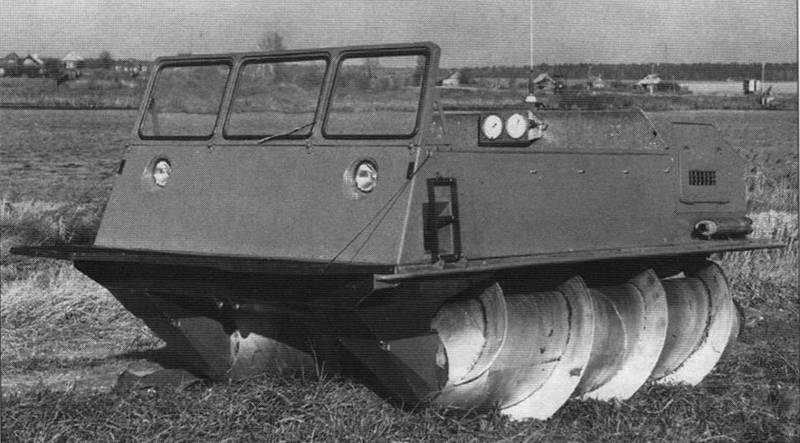
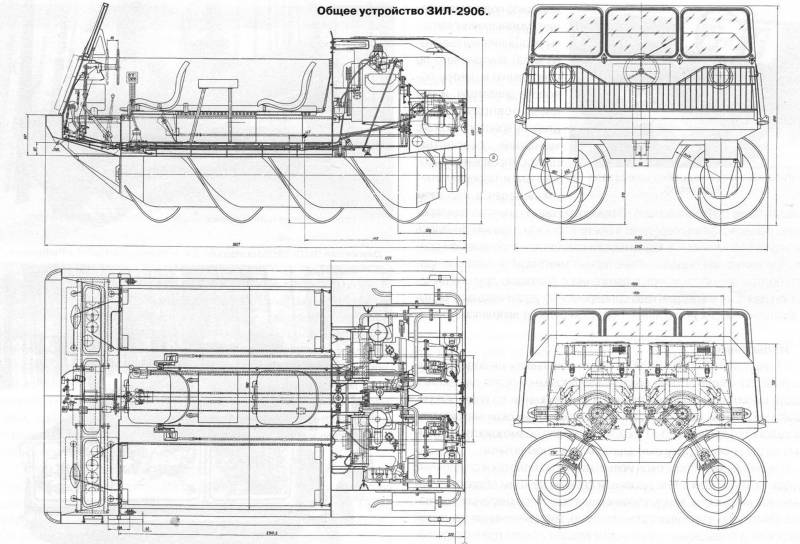
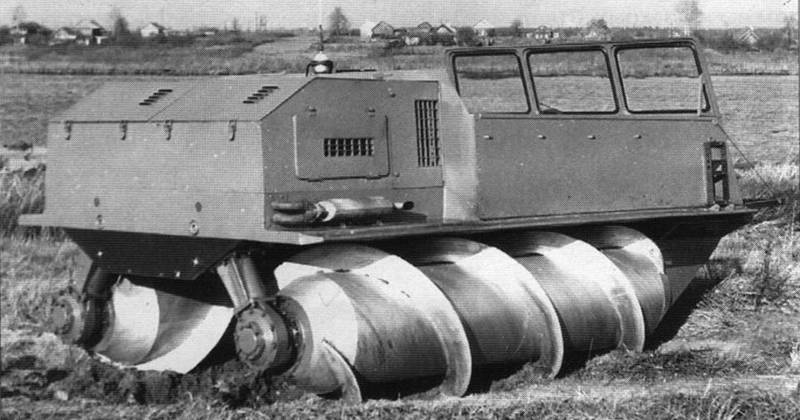
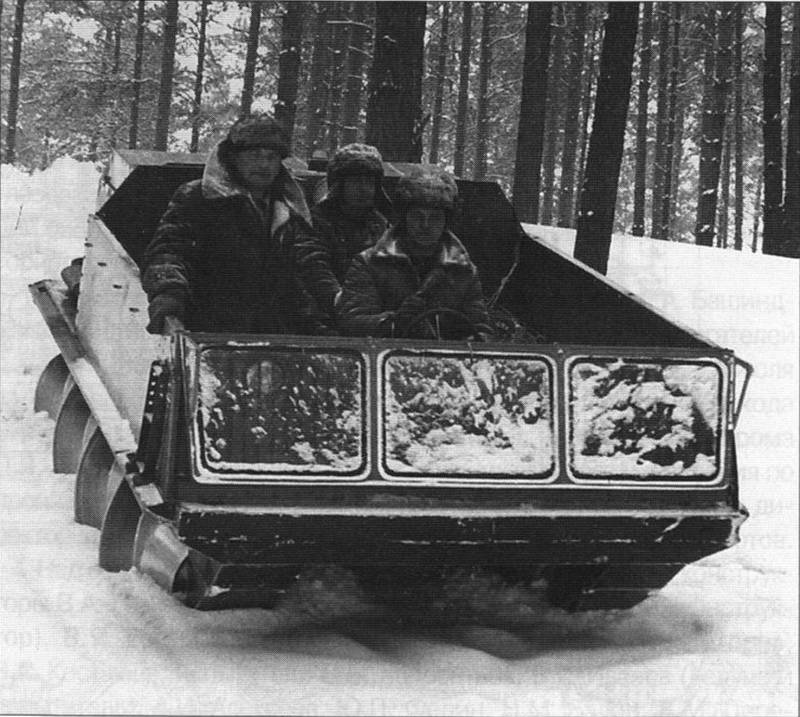
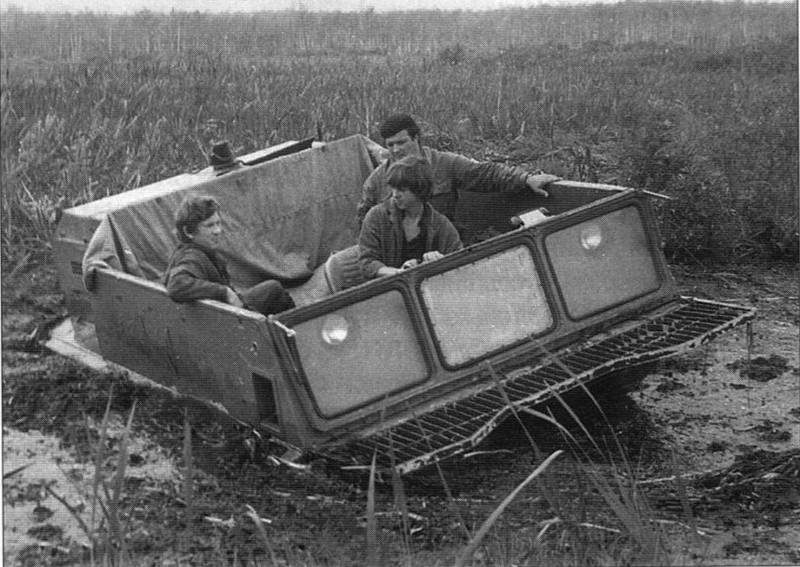
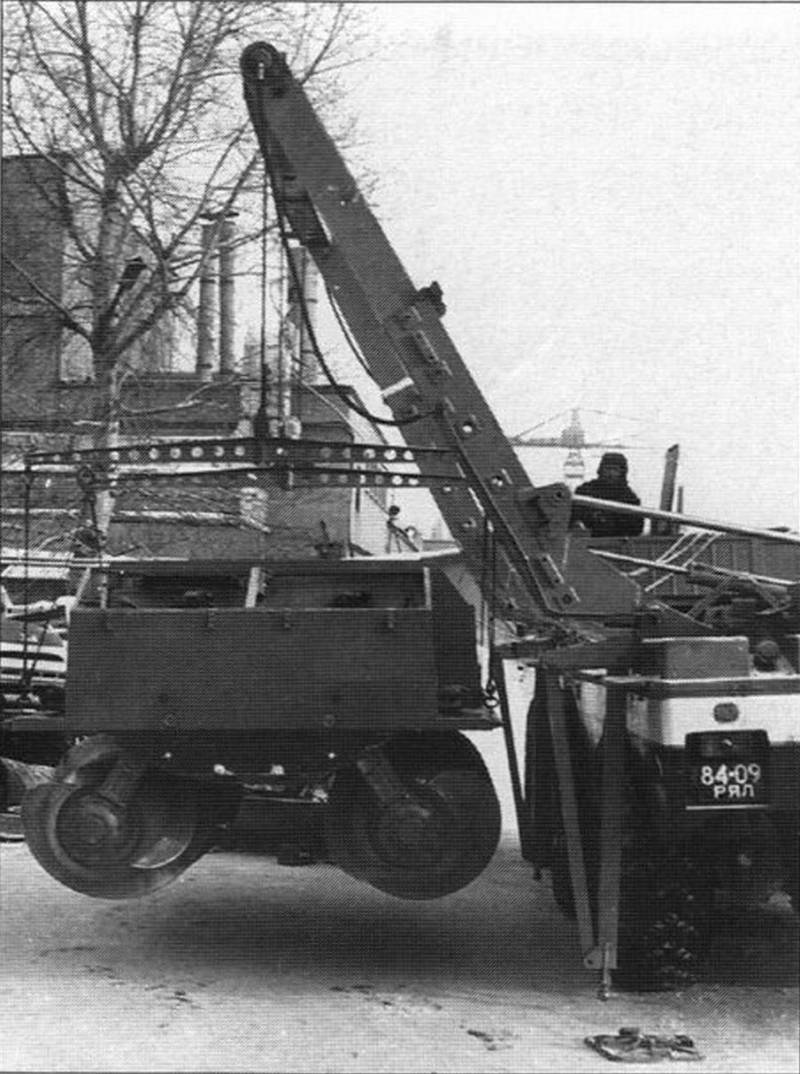
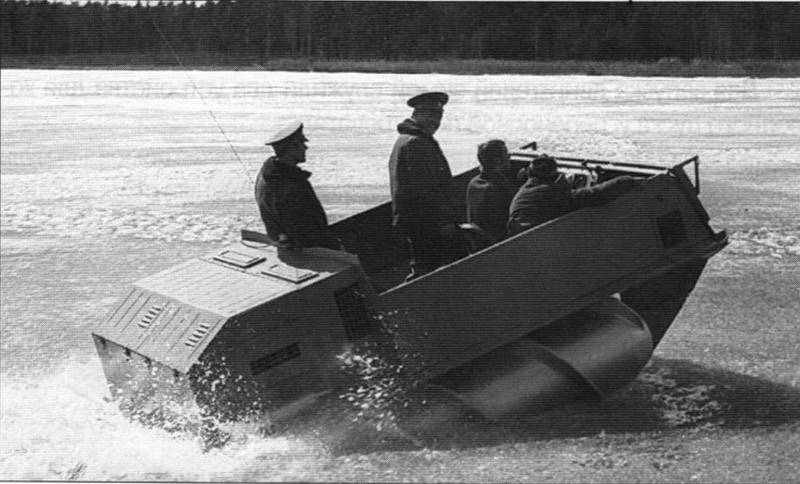
Information